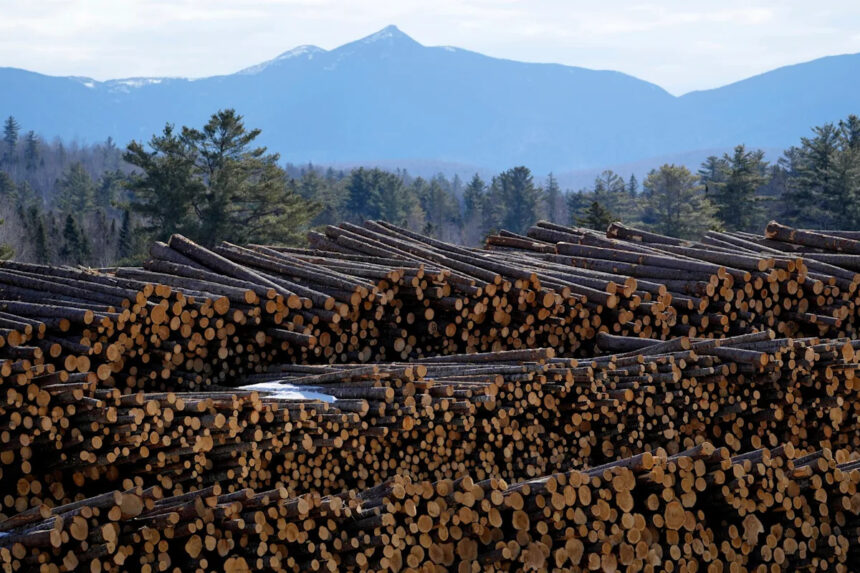Former President Donald Trump’s announcement of fresh tariffs on Canadian lumber has sent shockwaves through North American trade relations, potentially reshaping the economic landscape of both nations’ forestry sectors.
Trump declared a 25% tariff on Canadian softwood lumber and an additional 10% on upholstered products in a move he claims will protect American jobs and businesses. “We’re taking back control of our timber industry,” Trump stated during his announcement. “Too long we’ve watched Canadian lumber flood our markets while our workers suffer.”
The timing couldn’t be more consequential for the housing market. U.S. builders, already grappling with material shortages and soaring costs, rely heavily on Canadian lumber—approximately 30% of all softwood lumber used in American construction comes from north of the border. Industry analysts predict these tariffs could add between $5,000 to $10,000 to the average new home construction cost.
Canadian Prime Minister Justin Trudeau responded swiftly, calling the tariffs “unjustified and harmful to citizens on both sides of the border.” Canada’s timber industry, which employs over 200,000 workers and contributes roughly $25 billion annually to the nation’s economy, now faces significant uncertainty.
This isn’t the first time Canadian lumber has been caught in cross-border trade disputes. The two nations have engaged in softwood lumber disagreements for decades, with the U.S. frequently alleging that Canada unfairly subsidizes its timber industry through provincial government management of forestlands—a claim Canadian officials consistently reject.
Market response has been immediate and dramatic. Lumber futures jumped 4.2% following the announcement, while shares in major U.S. timber companies like Weyerhaeuser and Potlatch DeltiPoin saw gains of 3.1% and 2.8% respectively. Conversely, Canadian producers like West Fraser Timber and Canfor experienced share price declines exceeding 5%.
The economic consequences extend beyond stock prices. The National Association of Home Builders estimates these tariffs could result in 19,000 lost jobs in the U.S. construction sector alone. “This is exactly what we don’t need during a housing affordability crisis,” said Robert Dietz, NAHB chief economist. “Higher lumber costs directly translate to fewer homes built and higher prices for consumers.”
Environmental experts have also weighed in, suggesting the tariffs could have unintended ecological consequences. “When you artificially restrict Canadian imports, which come from more sustainably managed forests, you increase pressure on domestic timberlands that may not be managed with the same environmental standards,” explained Dr. Ellen Thompson, forestry scientist at the University of British Columbia.
As both nations prepare for what could be another prolonged trade dispute, consumers ultimately stand to bear the heaviest burden through increased costs for everything from new homes to furniture. With housing affordability already at crisis levels in many North American cities, these tariffs may further exacerbate an already challenging situation for prospective homeowners.
Will these tariffs achieve their intended purpose of revitalizing the American timber industry, or will they simply raise costs for consumers while straining international relations? As lumber yards across America brace for impact, that remains the $5.6 billion question—the approximate annual value of Canadian softwood lumber exports to the United States now caught in the crossfire of international trade politics.










